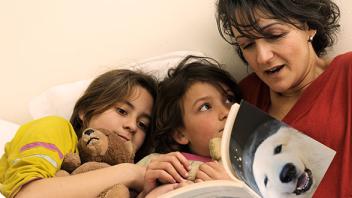Reading together remains one of the most important things adults can do with their young learner. Today, recommendations include reading information or nonfiction books with much more regularity. Nonfiction books present many opportunities to learn new concepts and vocabulary, as well as broaden a child’s view of the world. Nonfiction books are written differently than picture books in that there are often more pictures, graphics, charts and photographs included within the pages. Parents can ease the transition into more nonfiction reading by encouraging your child to preview a book before reading and to be an active reader who asks lots of questions.
Take a “book walk”
One great way to make predictions about an unfamiliar nonfiction text is to take a “walk” through the book before reading. By looking closely together at the front and back cover, the index, table of contents, the glossary, and the photographs or other images, readers can start to get a sense about the topic. This scanning and skimming helps set the expectation for the reading. Take the time to walk through the book before starting to read.
Encourage questions
A second way to develop more understanding with nonfiction books is to encourage your child to be an active reader who asks lots of questions. Parents can model these behaviors by talking or thinking out loud as you turn the pages of the book. This is a helpful way for your child to see and hear what a successful reader does when faced with difficult or unfamiliar topics. For example, “When I looked at this photograph, I asked myself, “Where is Antarctica? Is that the same place as the South Pole?” Then talk together about how and what you would need to do to find the answer to the questions. This will reinforce that many questions can be answered by reading a text closely and by paying attention to captions and picture titles. Some children enjoy writing their questions on sticky notes and working to answer them during the reading.
Previewing a text and asking questions are two terrific ways to navigate nonfiction texts. Enjoy spending more time with some fascinating informational books!
Download this article in Spanish
Subscribe to Growing Readers!
Get our free monthly parent tips — in English and Spanish — delivered right to your inbox!
